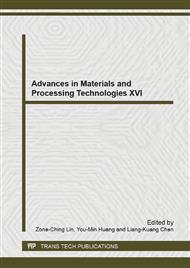p.615
p.623
p.630
p.635
p.647
p.655
p.663
p.671
p.679
Development and Optimization of a Low Normal Force Contact
Abstract:
Throughout the technological advancements, electronic devices are getting high dense and less expensive in day by bay. Thus, significantly reducing the production cost is the vital issue in order to produce more competitive device with maintaining its standard in all expect. Therefore, introducing new compact contact in high-Hertz stress with low normal force (LNF) will be a key technology to achieve the future goal. In this research, it is identified that only a 5μm radial tip with 0.1N force contact provides an excellent electrical performance which is much sharper than conventional connectors. This invention gives a big hope to produce less expensive and high dense Low Normal Force contact. The contacts durability test were also successfully passed 0.30 million cycles of uses while the contact resistance were ≦50mΩ.
Info:
Periodical:
Pages:
647-654
Citation:
Online since:
May 2014
Authors:
Keywords:
Price:
Сopyright:
© 2014 Trans Tech Publications Ltd. All Rights Reserved
Share:
Citation:


